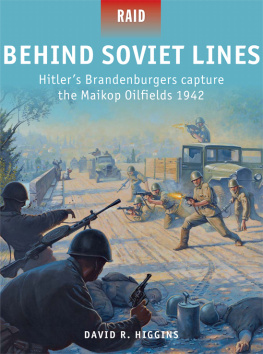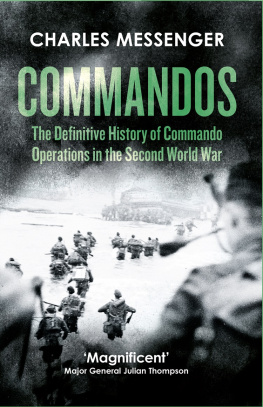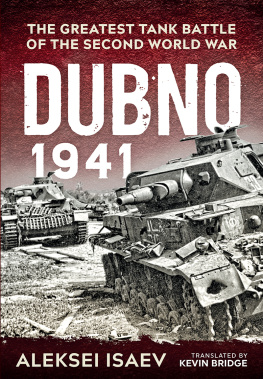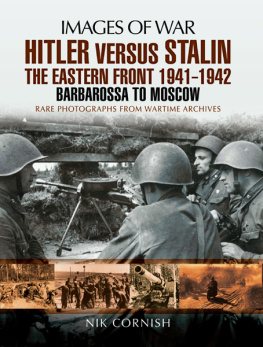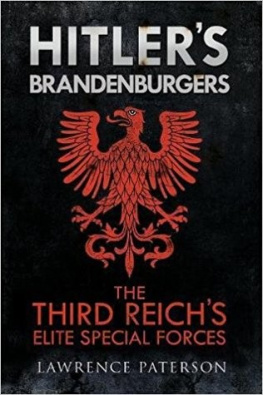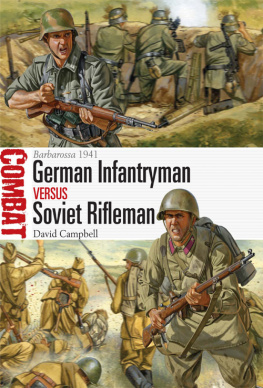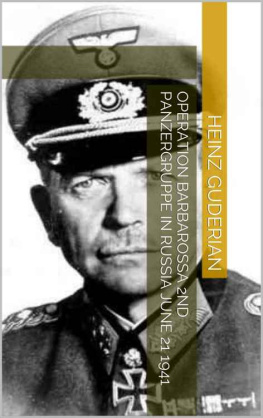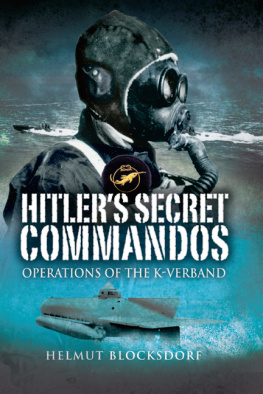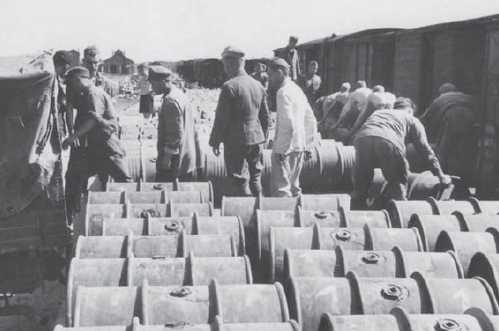BEHIND SOVIET LINES
Hitlers Brandenburgers capture the Maikop Oilfields 1942
DAVID R. HIGGINS
CONTENTS
INTRODUCTION
For more than a year after the start of World War II in Europe, the German Army and Luftwaffe achieved a string of decisive victories against Poland, the Low Countries, Denmark, Norway, and most importantly against France its historic rival, and promoter of the punitive Versailles Treaty that was intended to cripple Germanys economy and military following the Great War. Propaganda credited German use of modern, all-arms armoured, mechanized, and aerial forces, something with which the vanquished were eager to concur, in part to deflect blame from their own deficiencies in leadership, doctrine, and foresight. As these campaigns were of relatively limited space and duration, problems related to logistics, casualty replacement, and an overwhelmingly foot and horse-bound army did not unduly hinder the Wehrmacht maintaining a rapid battlefield tempo. With such accomplishments won at significantly less cost than during the previous world war, by early 1941 Germanys Fhrer and Reichskanzler, Adolf Hitler, felt confident to enact his long-desired plan to defeat Communist Russia, create Lebensraum (living space) for colonization, and control Eastern Europes labour potential, foodstuffs, and raw materials. Although as part of their recently signed Treaty of Non-Aggression and subsequent Commercial Agreement, the Soviets had been providing their new ally with considerable amounts of such items, including grain, iron ore, and oil, in exchange for military technologies and manufacturing capabilities, Hitler remained firm in his conviction to eliminate his political and ideological foe in what was expected to be another short campaign not exceeding six weeks.
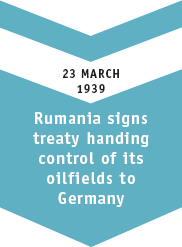
Throughout the 1930s, Germany seemed impossibly far from producing enough food and especially fuel to weather a potentially long war, as roughly two-thirds of its fuel was imported from North and South America. Although Hitler pushed for domestic production of a synthetic alternative to offset potential wartime blockade shortages, the effort lacked effective leadership and coordination until 1938, when Luftwaffe Commander-in-Chief, Hermann Gring, was placed in charge of the existing Four Year Plan, in which various experts worked to move the nation toward economic independence and a wartime mobilization. Although the group steadily achieved most of its goals, including increasing domestic oil production, any incentive to implement an effective, realistic fuel policy was hindered by the accumulation of conquered assets. Just one year into the war, the nations petroleum resources had increased by more than half via the acquisition of the oil refineries and storage facilities at Pechelbronn (Alsace), La Rochelle (France), Rotterdam (Netherlands), Antwerp (Belgium), Austria, and elsewhere. As the defeated Polish and Western forces had largely refrained from destroying or damaging their oil production facilities, German leaders hoped that such a scenario would hold true with the Soviets, and beyond that, the oil-rich Middle East.
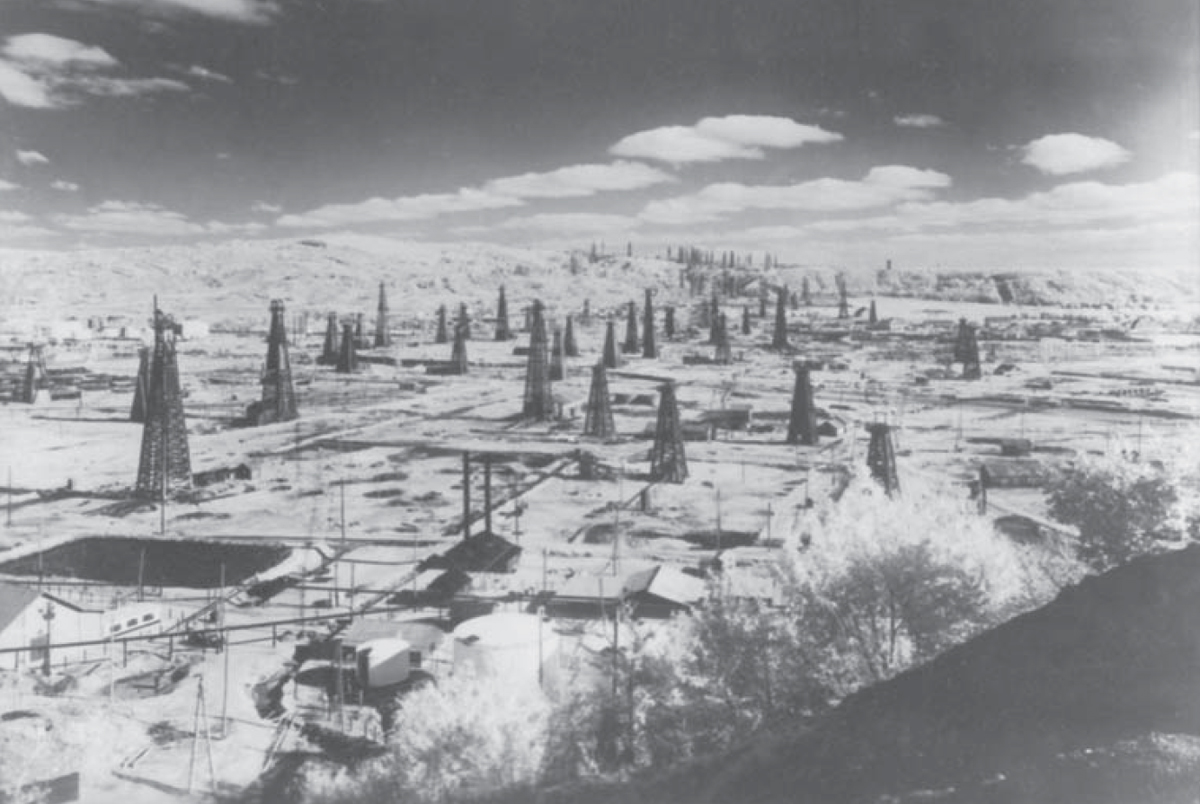
As Europes largest oil production and refining facility, Ploesti (Rumania) provided the majority of Germanys imported oil by early 1941. Estimates that domestic and occupied reserves would be exhausted by August, however, prompted Germany to focus on securing the oil-producing Caucasus region to make up the difference. (NARA)
However significant Germanys recent petroleum conquests were, they paled in comparison to what resulted from its influence over Rumania, the worlds fourth largest oil producer in 1936. Having recently pressured the nation into a bilateral economic agreement, Germany had considerable control over its allys resources, including the Ploesti petroleum facilities, which contributed roughly one-third of its needs and over 95 per cent of crude oil imports, and remained its most important foreign supplier until the summer of 1944. Although the Reichs fuel production assets and reserves had increased considerably, these fields were becoming exhausted, and they could ill afford expending the necessary money and effort required to explore, drill, and exploit new options.
As early as 31 July 1940, Hitler revealed to senior commanders his intention to shatter Russia to its roots with one blow, after which the German Army would secure the Caucasus and the primary Soviet oil-producing area around Baku, one of the worlds most productive fields, and others, including Grozny, Krasnodar, and Maikop. With western continental Europe secure for the foreseeable future, and the threat of a two-front war seemingly averted, Hitler unleashed Operation Barbarossa on 22 June 1941. With the Wehrmacht now fielding over three million men in the east, and thousands of motorized vehicles and aircraft, the need to secure these assets for the greatly expanding war effort was considered paramount. Within a few weeks, Germany had succeeded in overrunning a considerable amount of territory, and destroying or capturing large numbers of men and quantities of materiel something that would have been impossible had they not received the more than half a billion Reichsmarks (US $3.3bn today) in commercial goods shipments from its former ally over the preceding year.
The early estimate for victory in the east was increasingly unrealistic, however, as their reeling adversary remained in the field despite the cost. ByDecember ever-lengthening logistics, poor weather and terrain, and an influx of Soviet reinforcements from other sectors, once it became known that Japan was directing its attention toward the Pacific rather than Russia and would not be an immediate threat, meant that the Germans were forced to adopt a defensive stance along the 1,800km front from Leningrad to Rostov-on-Don. In addition to maintaining a presence in captured territories, resources were further stretched by a campaign in North Africa to support Italys floundering effort against the British, and Finlands Continuation War against their common Soviet enemy. Having thus suffered its first significant battlefield setback of the war, and faced with the prospect of a lengthy conflict, Hitler worried that his armed forces would soon grind to a halt for want of resources, particularly petroleum, oil, and lubricants.
During the winter of 194142, economic considerations were a factor in the formulation of a new strategy, as was the poor state of German forces in the east. Having unwisely declared war against the United States in support of Japan, Hitler feared a Soviet air campaign against the oilfields around Ploesti and domestic synthetic production launched from airfields in the Crimean Peninsula, which had yet to be subdued. By continuing eastward and capturing the Caucasus, the greater distances would negate this threat, likely eliminate Stalins ability to continue the war, and open a route to the Middle East. Should German efforts succeed, they would deliver a powerful blow to the Soviet economy and war effort, and enable the waging of a prolonged war against an increasing number of Allied nations.

